
Helina is a very large genus from the fly family Muscidae.

The Anthomyiidae are a large and diverse family of Muscoidea flies. Most look rather like small houseflies. Most species are drab grey to black. Many Pegomya are yellow, and some members of the genera Anthomyia and Eutrichota are patterned in black-and-white or black-and-silvery-grey. Most are difficult to identify, apart from a few groups such as the kelp flies that are conspicuous on beaches.

The Fanniidae are a small group of true flies largely confined to the Holarctic and temperate Neotropical realms; there are 11 Afrotropical species, 29 Oriental, and 14 Australasian.
Euryomma is a genus of species of flies of the family Fanniidae. The genus was originally proposed by the entomologist Paul Stein in 1899. Although at that time most authorities placed them in the family Muscidae. The distribution of Euryomma is mainly Neotropical, on the whole restricted to the Americas, there is also one Nearctic species, the exception being of the very cosmopolitan E. peregrinum
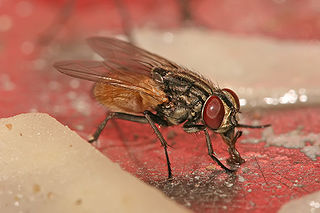
Muscini is a Tribe of flies from the family Muscidae.

Phaonia is a very large genus from the fly family Muscidae. It is distributed worldwide, with more than 750 species having been described.
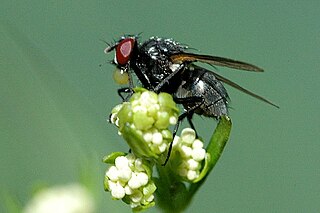
Hydrotaea is a genus of insects in the housefly family, Muscidae. They occur in most regions of the world but are more populous in warmer climates. They are often found on feces in summer months, and are therefore generally found in close proximity to livestock. Among the 130 known species in this genus, one of the most commonly recognized is the dump fly.

Azeliini is a tribe of flies from the family Muscidae.

Thricops is a genus of true flies of the family Muscidae.
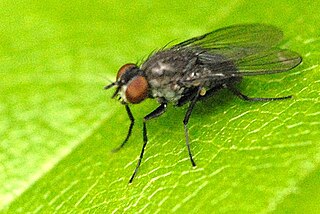
Coenosia is a very large genus of true flies of the family Muscidae. Coenosia are known as tiger flies since they are predators and hunt many kinds of insects and other invertebrates.
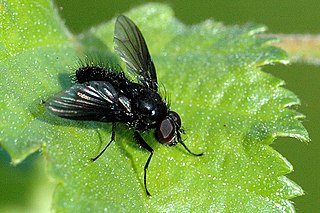
Spilogona is a very large genus of flies from the family Muscidae.

Mydaea is a large genus from the fly family Muscidae.

Hebecnema is a genus of true flies of the family Muscidae.

Lispocephala is a very large genus of true flies of the family Muscidae.
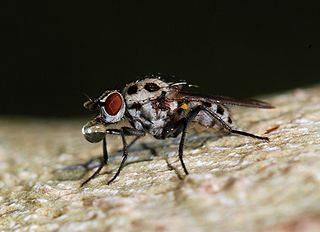
Anthomyia is a genus of flies in the family Anthomyiidae. They look rather like small houseflies, but commonly have conspicuous black-and-white patterning. This appears to be a mild form of aposematic coloration, though they do not appear to be distasteful unless they have eaten something offensive to the predator and have loaded their guts with it.
Caricea is a genus of house flies, in the family Muscidae. There are at least 30 described species in Caricea.

Leucophora is a genus of root-maggot flies in the family Anthomyiidae. There are at least 60 described species in Leucophora.

Cordilura is a genus of dung flies in the family Scathophagidae. There are more than 90 described species in Cordilura.

Sciomyzinae is a subfamily of flies in the family Sciomyzidae.

















